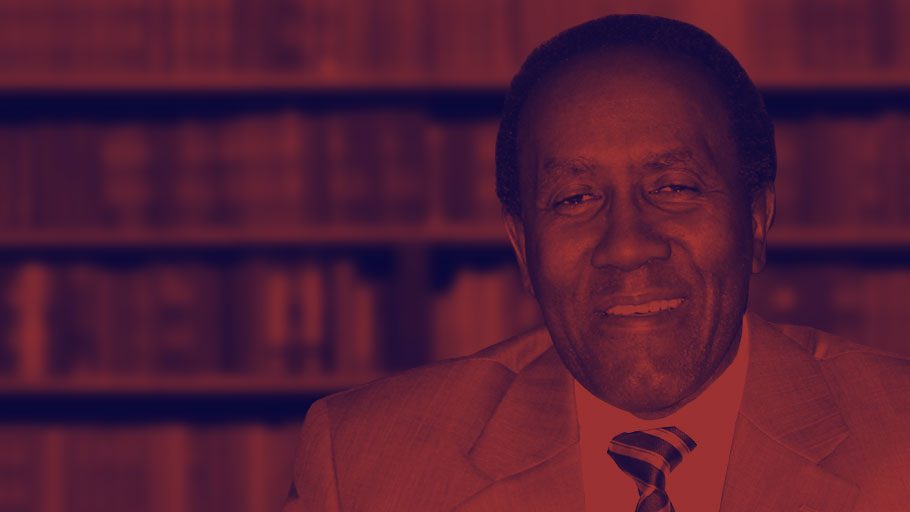By Basil Wilson For Carib News
C.L.R. James, the late Caribbean intellectual, was fond of saying that the civil rights movement was the finest movement in American history. James also noted that the reason why he wrote The Black Jacobins, his classic on the Haitian Revolution, was because he wanted to write a book not what slavery had done to black people but what black people had done to slavery.
In the same vein Nelson Mandela’s life must be assessed not what white supremacy did to Mandela but what Mandela did to white supremacy.
The system of apartheid that emerged in South Africa was identical to the segregationist system that came to the fore in the post-civil war period in the 1870s. It is all based on the absurd notion that skin pigmentation can determine racial superiority. In many respects, this fascist notion initially took hold in slavery in the New World and was continued in the aftermath of the emancipation struggle.
Different forms of race prejudice emerged in the New World. In the Caribbean the minuteness of the white population made it impossible for a white supremacist regime to take root but what institutionalized was a virulent class system that was manifested in Haiti, Jamaica, Barbados, Brazil, etc.
In America, in the post-slavery era, it took the form of Jim Crow and sought to elevate white privilege and systematically dehumanize the survivors of the slave system. Such a dastardly system was acceptable in American society until the spectacular rise of the civil rights movement. Such a movement waged non-violently was successful because the Federal government in a de-colonized world in which the overt embrace of racism had become untenable. The Federal government did not provide the state rights reactionaries with legitimacy and that enabled the non-violent movement to achieve its objectives.
Nelson Mandela’s civil rights struggle heated up around the same time as the civil rights movement in America but the Afrikaneers were more willing to use naked force as demonstrated in the Sharpsville massacre when 69 freedom fighters were mowed down for peacefully protesting the apartheid white supremacist system.
The African National Congress had to abandon achieving a democratic South Africa through peaceful protest and was compelled to resort to violent measures. The tactic was to damage the infra-structure and to minimize the loss of human lives. Mandela was forced to go underground.
Mandela was subsequently arrested and tried in a kangaroo court in South Africa. The principals of the ANC were on trial and they were all found guilty and sentenced to life imprisonment.
Mandela’s incarceration was brutal and the intent of the apartheid government was to isolate him and his comrades and hopefully crush the anti-apartheid movement. But the unintended consequences were that Mandela and the ANC became a symbol of anti-apartheid resistance. A worldwide movement caught fire and denounced the immorality and atrocities of the Afrikaneer fascist.
Conservative forces in America personified by the Reagan administration tried to whitewash the rapacious nature of the apartheid regime. The Reagan administration and the Margaret Thatcher government in Britain concocted the policy of “constructive engagement”. They saw South Africa as a bulwark against communism and presumed that apartheid could be cajoled into making gradual changes from within.
The Reagan Administration was comprised of ideologues who were soft on racism. They represented a holdover of a white supremacist age that did not find the apartheid regime’s conduct obnoxiously odious. Were it left to the Thatchers and the Reagans, Mandela would never have been released from Robin Island.
The worldwide anti-apartheid movement led by Randall Robinson of Trans Africa and the Congressional Black Caucus, college students in Ivy League institutions and non-Ivy League were in the forefront of the divestment initiatives. Both the House and the Senate broke with the Reagan administration and passed overwhelmingly over the President’s veto a Comprehensive Anti-Apartheid Act that further isolated the Botha regime from the rest of the world.
The worldwide anti-apartheid movement was the finest non-violent movement in recent history and was instrumental in the collapse of the Afrikaneer regime in South Africa.
After being incarcerated for twenty-seven years, Nelson Mandela alighted from prison in February, 1990. Botha had been deposed by DeKlerk who was willing to negotiate with the ANC. In 1994, South Africa held democratic elections and Nelson Mandela as the head of the ANC presided over a democratically elected government.
“Modiba’s” triumph reflected the dying nature of white supremacy. He and the ANC chose not revenge based on the decades of injustice but to establish a government in which all men and women are created equal. The new South African government created a Truth and Reconciliation Commission to bring criminals to justice and to heal the wounds of the past. In many respects, the Truth and Reconciliation Commission was laudatory but underachieved its objectives of finding truth.
The democratic system of government is well institutionalized in South Africa. Mandela, like W.E.B. DeBois, had a long life. He lived long enough to see the destruction of the apartheid state and the birth of a democratic South Africa. Unlike so many African leaders, he was not obsessed with the trappings of power and was able to cede power to another generation of leaders. These are the qualities that have made Nelson Mandela one of the political icons of the twentieth and twenty-first century.















